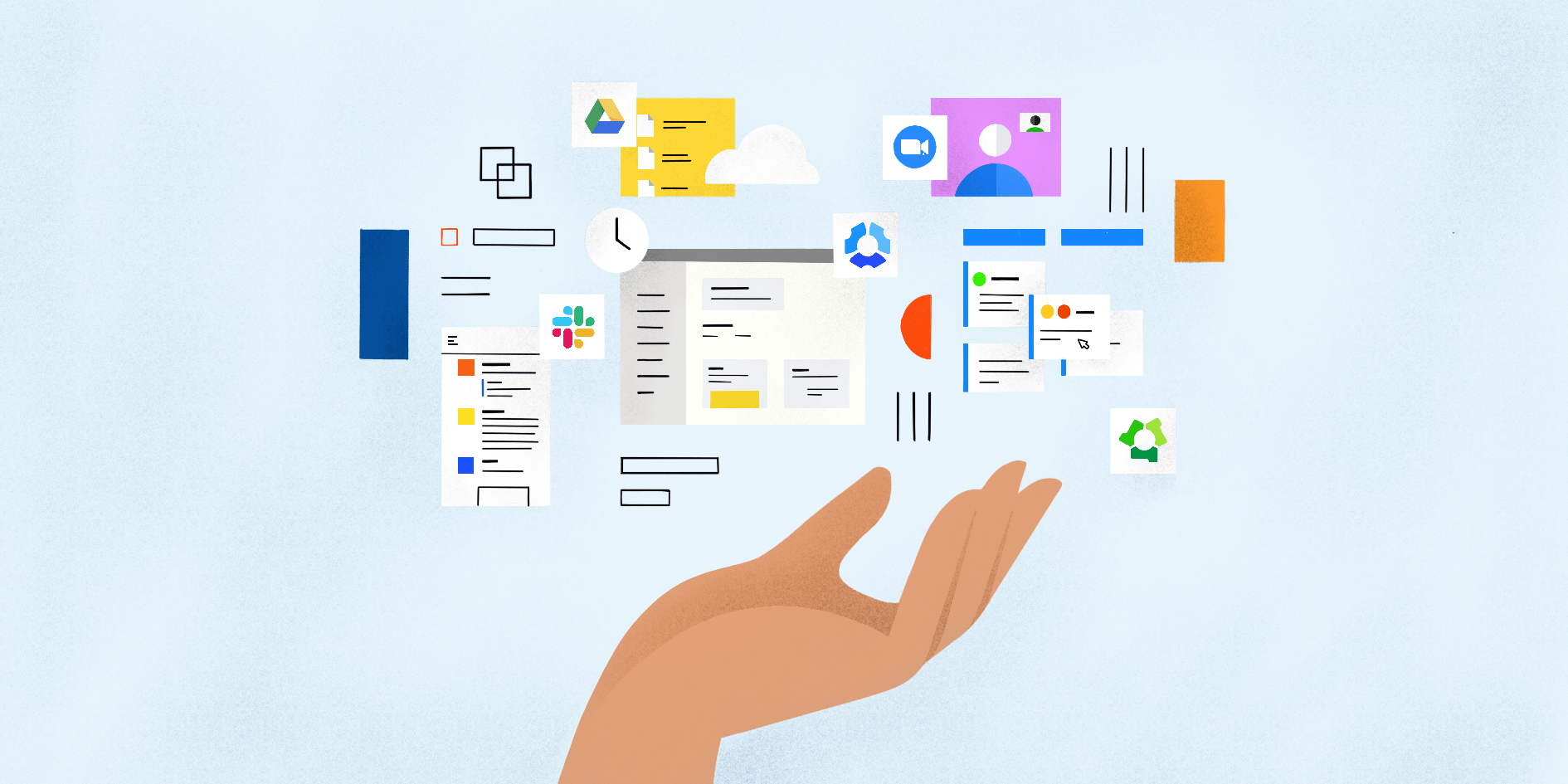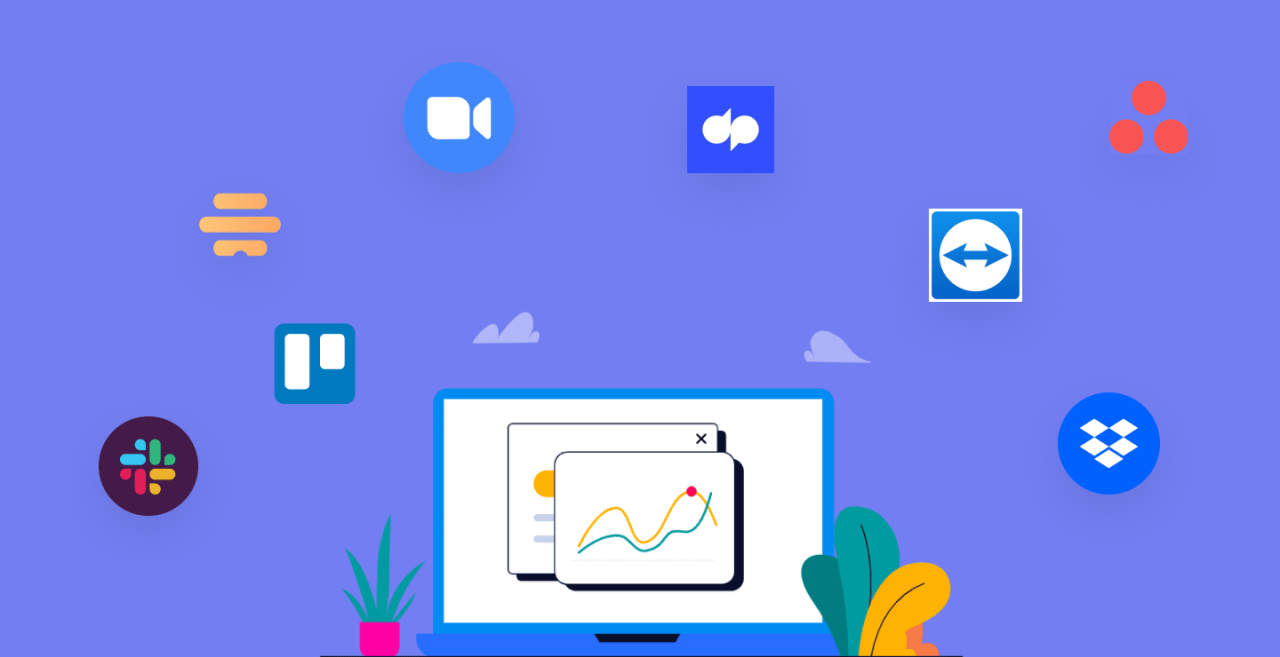Remote work is amongst the largest transitions seen in today’s workplace. With flexible workplaces now being trendy so rapidly, workers are counting increasingly on technology as a mode of maintaining productivity while enabling safe communication through virtual media. Up to 2025, remote work technology just keeps getting better, and a long list of tools are assisting workers in collaborating, organizing, and protecting their online presence. For the sake of this article, we will consider the most basic tools used in remote work environments for productivity and security.
1. Collaboration Tools for Seamless Communication
Communication is the single most essential element in any remote work arrangement. In lieu of face-to-face communication, there must be effective communication tools. Some of the most frequently used collaborative tools are:
Slack
One of the most popular messaging platforms for remote teams, Slack has channels, direct messages, and integration with almost all apps like Google Drive, Zoom, and Trello, making it an excellent team communication platform in one location.
Key Features:
- Instant messaging for brief communications.
- Channels based on teams or projects.
- Integration with over 2,000 productivity apps.
Microsoft Teams
Microsoft Teams consolidates chat, video conferencing, file sharing, and application integration into one window. Ideal for organizations already invested in the Microsoft ecosystem (Office 365, OneDrive).
Salient Features:
- Collaboration on live documents.
- Secure sharing of files and video conferencing.
- Seamless integration with Microsoft Office suite.
All these features allow seamless remote team collaboration, keeping them up to date and active at all times irrespective of time zones.
2. Cloud Storage Solutions: Secure Storing and Sharing of Documents
Secure file sharing and storage are crucial in an online environment. Cloud storage tools offer convenient and secure means of storing business-sensitive files.
Google Drive
Google Drive offers editing, collaboration on documents, sheets, and slides in real time. As a cloud application, it enables secure storage, accessing, and editing of files remotely by teams.
Key Features:
- Real-time edit and collaboration.
- Secure cloud storage with permission-enabled sharing.
- Synchronization with Google Workspace (Docs, Sheets, Slides).
Dropbox
Dropbox is another highly sought-after cloud storage service that both personal and professional options are provided. It is highly renowned for being easy to use, for having file versioning, as well as good security features.
Key Features:
- File synchronization across machines.
- Sharable easily with links and folder permissions.
- Sleek integration with apps like Slack and Zoom.
Cloud storage systems like Dropbox and Google Drive allow remote employees to store and share vital documents and have very high levels of security.

3. Project Management Software: Remain on Schedule and Organized
There must be an appropriate project management software to handle deadlines, task assignments, and work process. These programs enable off-site employees to remain up to date about work smoothly from anywhere.
Trello
Trello uses the card-based board system to condition teams to think pictorially concerning work. It’s ideal for tracking project work and keeping everybody on the same page with deadlines and tasks.
Key Features:
- Board, list, and card visual task organization.
- Checklist, due dates, and attachment support addition.
- Google Drive, Slack, and productivity integrations.
Asana
Asana is a great project management tool that allows teams to organize their work and work together effectively. It’s famous for task assignment, timelines, and reporting, making it one of the best to use when dealing with complex workflows.
Key Features:
- Task assignment, due dates, and rich descriptions.
- Timeline views and progress tracking.
- Reporting features to track project health.
Both Asana and Trello remind remote workers of tasks and deadlines and are therefore the most convenient platforms for any remote team.
4. Time Management Tools: Ideal Productivity
Similarly so, with work-from-home, professional and personal lives get so conveniently blurred. Time management tools keep remote workers in mind about what needs to be done, remain productive, and make the most of their time.
Toggl
Toggl is a time management software through which remote employees can monitor time spent on a project with higher concentration and efficiency. It is of most benefit to freelancers and businesses that need to bill customers by the hour.
- Most significant features:
- Time tracking with detailed reporting.
- Project management integration like Trello and Asana.
- Real-time tracking across devices.
RescueTime
RescueTime lets one monitor time spent on apps and websites with accurate insight into productivity trends. RescueTime lets remote workers view where they are spending time and prioritize accordingly.
Key Features:
- Accurate time spent reports.
- Productivity goal reminders.
- Solid time spent tracking.
All these time tracking apps enable remote workers to make the most of work time, being more productive and focused.

5. Security Tools: Securing Sensitive Information
Safety always comes into the picture where working remotely entails the handling of confidential information using media in digital formats. VPN, secure communication, and anti-virus software are able to secure remote workers against compromising personal and organizational information.
NordVPN
VPNs like NordVPN provide remote employees with the luxury of secure connection of public networks and the encryption of web traffic from security hazards. It offers encrypted web traffic, which protects data from hacking while on public Wi-Fi.
Key Features:
- Strong encryption for safe browsing.
- Streaming geo-restricted content anywhere.
- No-logs policy to provide privacy guarantee.
LastPass
With several remote workers handling several passwords, LastPass securely stores passwords and makes it easy to share across computers. It also offers secure password sharing among teams.
Major Features:
- Secure password storage and sharing through the use of encryption.
- Two-factor authentication for security.
- Smooth web browser integration.
The use of VPNs and password managers such as LastPass is crucial to protecting personal and business data while working remotely.
6. Video Conferencing Tools: Facilitating Face-to-Face Communication Remotely
Video conferencing is the foundation of remote communication. Software such as Zoom and Google Meet are essential for virtual meetings, webinars, and direct communication with clients and colleagues.
Zoom
Zoom was extremely popular during the pandemic and continues to be one of the most utilized video conferencing platforms for remote work. Zoom is an excellent choice for team meetings with capabilities like breakout rooms, virtual backgrounds, and calendar app integration.
Key Features:
- High-definition video and audio.
- Breakout rooms for small group conversations.
- Calendar integrations and scheduling.
Google Meet
Google Meet is a simpler, easier-to-use video conferencing solution that’s natively part of Google Workspace. It’s great for teams already committed to Google’s productivity app ecosystem.
Key Features:
- Simple, secure video calling.
- Tandem integration with Google Calendar and Gmail.
- Real-time captioning for better accessibility.
Video conferencing tools like Zoom and Google Meet are what make face-to-face interaction and collaboration possible in dispersed teams.

Adapting to the Future of Remote Work
With telecommuting still being a force to be reckoned with in 2025, proper tools for productivity and security are the key to success. From communication, project management, and time management to data security, the right technology can make or break the success or failure in making remote work productive, secure, and efficient.
With the use of tools covered in this article, remote workers are able to enjoy a smooth workflow, remain organized, and protect their work—leading in the end to more productivity and efficiency.










